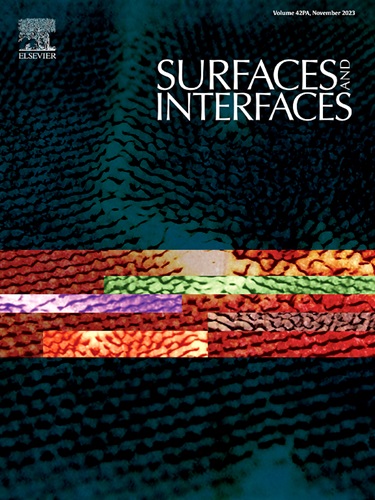二维金属 TPHOD-石墨烯:面向钾离子电池高性能负极材料的表面和界面工程学
IF 5.7
2区 材料科学
Q2 CHEMISTRY, PHYSICAL
引用次数: 0
摘要
本文章由计算机程序翻译,如有差异,请以英文原文为准。
Two-dimensional metallic TPHOD-graphene: surface and interface engineering toward a high-performance anode material for potassium-ion batteries
Potassium-ion batteries (PIBs) show great promise as an attractive alternative to lithium-ion batteries (LIBs), owing to their affordability, safety, and high energy density. However, the lack of suitable anode materials poses a significant challenge to realize high-performance PIBs. By the assembly of acenaphthene (C12H8) skeletons, we predict a two-dimensional (2D) carbon allotrope named TPHOD-graphene, which is composed of tetragonal, pentagonal, hexagonal, octagonal, and dodecagonal rings. It has excellent dynamical, thermal, and mechanical stability. The metallic nature of the TPHOD-graphene monolayer contributes to excellent conductivity, facilitating rapid electron transport. As an anode material for PIBs, TPHOD-graphene delivers a high theoretical capacity of 930 mAh/g. The low ion diffusion barrier (0.33–0.37 eV) favors good charge-discharge efficiency. Moreover, the moderate intercalation/deintercalation potential effectively mitigates the formation of metal dendrites. The introduction of solvents can boost the adsorption and mobility of K ion on TPHOD-graphene. Furthermore, the presence of vacancy in TPHOD-graphene significantly enhances the K adsorption strength but creates a trapping effect which impedes ion migration. Similar to the monolayer, bilayer TPHOD-graphene maintains the good adsorption and diffusion characteristics of K.
求助全文
通过发布文献求助,成功后即可免费获取论文全文。
去求助
来源期刊

Surfaces and Interfaces
Chemistry-General Chemistry
CiteScore
8.50
自引率
6.50%
发文量
753
审稿时长
35 days
期刊介绍:
The aim of the journal is to provide a respectful outlet for ''sound science'' papers in all research areas on surfaces and interfaces. We define sound science papers as papers that describe new and well-executed research, but that do not necessarily provide brand new insights or are merely a description of research results.
Surfaces and Interfaces publishes research papers in all fields of surface science which may not always find the right home on first submission to our Elsevier sister journals (Applied Surface, Surface and Coatings Technology, Thin Solid Films)
 求助内容:
求助内容: 应助结果提醒方式:
应助结果提醒方式:


